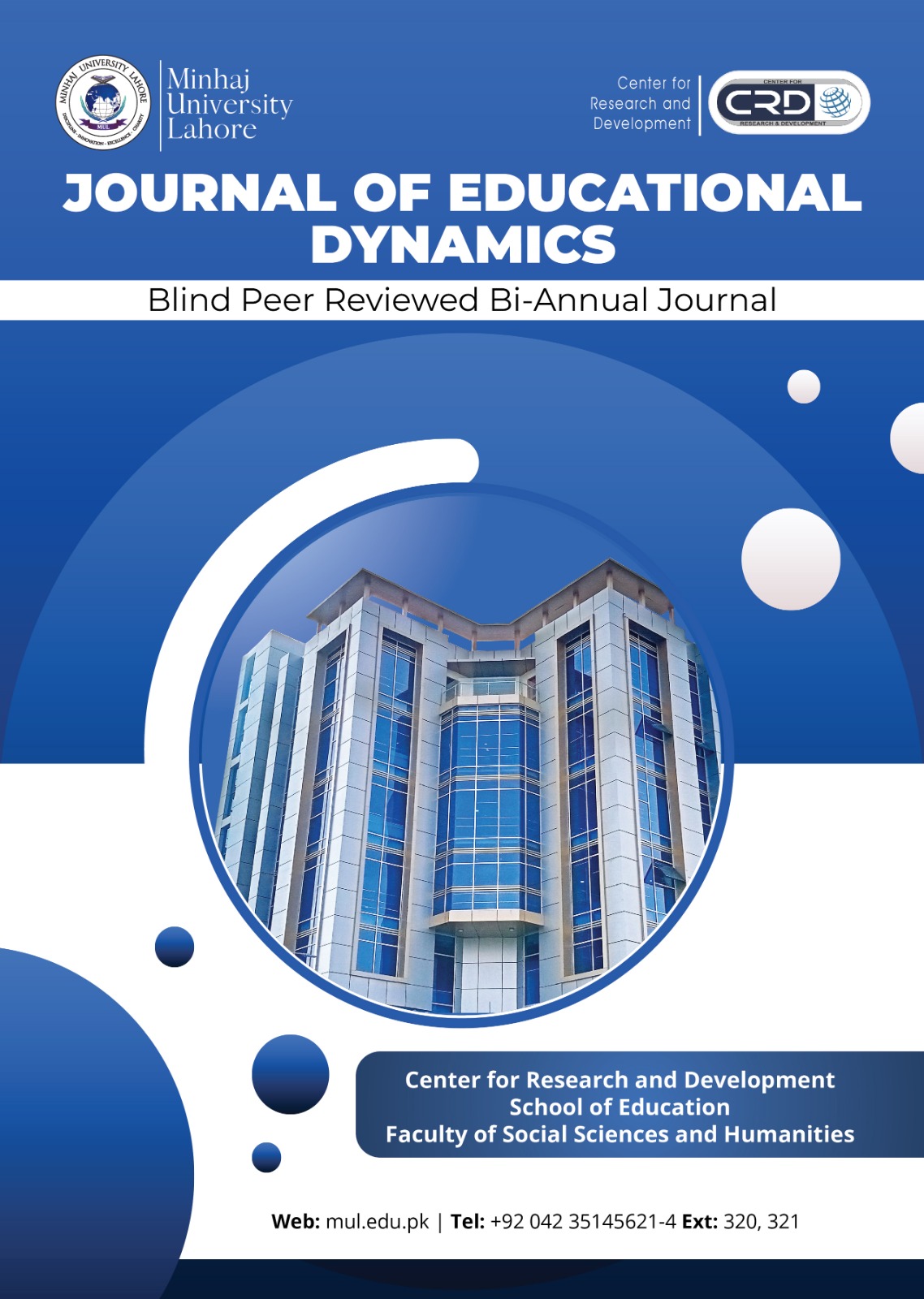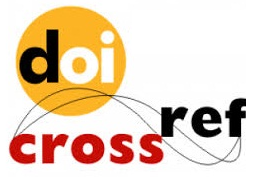Teachers’ Motivational Techniques and students' Performance: A comparative study in Lahore
DOI:
https://doi.org/10.58932/MULI0013Keywords:
Teachers’, Motivational Techniques, students' Performance, LahoreAbstract
The techniques that promote individuals goal related behavior are motivational techniques. As a teacher, knowing how to apply motivational techniques at primary level is the most powerful tool for teaching. The aim of this study is to find out if there is any difference of the usage of motivational techniques among the government and private school teachers. Primary school teachers, teaching for both government and public schools in Lahore were selected as a population of this research. A simple random sampling method was selected. A total of 300 primary schools teachers were selected for gathering data. The statistical package for social sciences (SPSS) was employed for the purpose of data entry, manipulation and data analysis. When the results of this study reviewed, it was observed that motivational techniques are used in both public and private sectors. It was also observed that motivational techniques are very helpful in enhancement of learning.
References
Adhikari, N. P., Budhathoki, J. K., & Adhikari, S. (2025). Student motivation in the classroom: Practical techniques and strategies. Cognition, 7(1), 67-75.
Alasad, S. (2017). The leadership styles of principals in bedouin secondary School and teachers motivation. Philosophy Study, 7(3), 153-168.
Bukhari, S. G. A. S., Jamali, S. G., Larik, A. R., & Chang, M. S. (2023). Fostering intrinsic motivation among teachers: Importance of work environment and individual differences. International Journal of School & Educational Psychology, 11(1), 1-19.
Anwar, S. H., & Ijie, H. S. (2023). Teacher’s Role as Motivator in the Development of Students at Neglasari Cipare Primary School, Serang, Indonesia. Community Medicine and Education Journal, 4(2), 293-298.
Braver, Todd S., Marie K. Krug, Kimberly S. Chiew, Wouter Kool, J. Andrew Westbrook, Nathan J. Clement, R. Alison Adcock et al. "Mechanisms of motivation–cognition interaction: challenges and opportunities." Cognitive, affective, & behavioral neuroscience 14 (2014): 443-472.
Brophy, J. (2004). Motivating students to learn. New York, Routledge.
Butler, R., & Shibaz, L. (2008). Achievement goals for teaching as predictors of students' perceptions of instructional practices and students' help seeking and cheating. Learning and instruction, 18(5), 453-467.
Daumiller, M., Gaspard, H., Dickhäuser, O., & Dresel, M. (2025).Bridging teacher motivation and instruction: Relevance of student-oriented goals for teachingalongside personal achievement goals and self-efficacy. British Journal of Educational Psychology, 00,1–17. https://doi.org/10.1111/bjep.12776
De la Maza San, M. S., Campo, L., Delgado, N., & Urbieta, J. M. E. (2025). Does Intrinsic Motivation Improve Academic Achievement, or Vice Versa?: Providing Longitudinal Evidence for the Main Theories of Motivation Based on Primary Education Students’ Age and Sex. Revista de Investigación Educativa, 43.
Dörnyei, Z. (1994). Motivation and motivating in the foreign language classroom. The modern language journal, 78(3), 273-284.
Engin, M., & McKeown, K. (2017). Motivation of Emirati males and females to study at higher education in the United Arab Emirates. Journal of Further and Higher Education, 41(5), 678-691.
Epstein R, Robertson RE, Smith R, Vasconcellos T, Lao M. Which relationship skills count most? A large-scale replication. J Couple Relationship Ther 2016; 15(4): 341-56.
Girmus, R. L. (2011). How to motivate your students. Paper presented at the NMSU-Grants Round-Up Conference, New Mexico State University–Grants. Retrieved from https://merithub.com/tutorial/how-to-motivate-your-students-c7bno3donhcu71pbq4vg
Hattie, J. A., & Donoghue, G. M. (2016). Learning strategies: A synthesis and conceptual model. npj Science of Learning, 1(1), 1-13.
Jiang, L., Zhou, N., Gu, M. M., & Li, X. (2025). Exploring student motivation and engagement in EMI: A latent profile analysis. Language and Education, 39(1), 72-90.
Khun-Inkeeree, H., Yusof, M. R., Maruf, I. R., Mat, T. R. T., & Sofian, F. N. R. M. (2022, May). Enhancing school effectiveness by implementing identified and intrinsic motivation among primary school teachers. In Frontiers in Education (Vol. 7, p. 852378).
Kistnasamy, E. J. (2014, June 2). The Power of Extrinsic Motivation in Tertiary Education. Science and Education Publishing, 2(6), 383-388. https://doi.org/10.12691/education-2-6-9
Limson, S. L. I. (2023, March 8). How People Learn II: Learners, Contexts, and Cultures. Academy of Management. https://doi.org/10.5465/amle.2022.0312
Lohrmann, S., & Talerico, J. (2004). Anchor the Boat. SAGE Publishing, 6(2), 113-120. https://doi.org/10.1177/10983007040060020601
Mahardika, A. A. A., & Kuswandono, P. (2022). Indonesian graduate students’ strategies in regulating their motivation in academic reading. Premise: Journal of English Education and Applied Linguistics, 11(2), 329-347.
Marshall, H. H. (1987). Motivational strategies of three fifth-grade teachers. The elementary school journal, 88(2), 135-150.
Memary, R., & Wong, K. Y. (2009). An investigation of the expectancy theory elements for motivating employees. In 2009 International Association of Computer Science and Information Technology-Spring Conference (pp. 286-290). IEEE.
Mitroussi, K., & Notteboom, T. (2014). Getting the work done: motivation needs and processes for seafarers and dock workers. Springer Science+Business Media, 14(2), 247-265. https://doi.org/10.1007/s13437-014-0064-y
Russell, J. M., Baik, C., Ryan, A. T., & Molloy, E. (2022). Fostering self-regulated learning in higher education: Making self-regulation visible. Active Learning in Higher Education, 23(2), 97-113.
Ryan, R M., & Deci, E L. (2000). Intrinsic and Extrinsic Motivations: Classic Definitions and New Directions. Elsevier BV, 25(1), 54-67. https://doi.org/10.1006/ceps.1999.1020
Serdarević, S. (2023, May). Teachersmotivation in the digital environment. In DIEM: Dubrovnik International Economic Meeting (Vol. 8, No. 1, pp. 128-133). Sveučilište u Dubrovniku.
Sergeeva, O. V., Zheltukhina, M. R., Ishmuradova, I. I., Kondakchian, N. A., Erokhova, N. S., & Zhdanov, S. P. (2025). A meta-analysis of the effectiveness of mobile supported collaborative learning. Online Journal of Communication and Media Technologies, 15(1), e202508.
T Soto, S., Espinosa Cevallos, L. F., & Rojas Encalada, M. A. (2025). Studies on motivation and EFL teaching and learning in Ecuador. Revista InveCom, 5(1).
Tadjibaeva, A. (2025). From Participation to Passion: Enhancing Motivation and Engagement in the Classroom. Preprints.org, DOI:10.20944/preprints202502.1124.v1
Urdan, T., & Schoenfelder, E N. (2006). Classroom effects on student motivation: Goal structures, social relationships, and competence beliefs. Elsevier BV, 44(5), 331-349. https://doi.org/10.1016/j.jsp.2006.04.003
Vallerand, R. J. (2012). From motivation to passion: In search of the motivational processes involved in a meaningful life. American Psychological Association, 53(1), 42-52. https://doi.org/10.1037/a0026377
Wati, M. (2017, May). Being a Role Model to Motivate Students. In 1st Yogyakarta International Conference on Educational Management/Administration and Pedagogy (YICEMAP 2017) (pp. 124-127). Atlantis Press.
Wentzel, K. (2020). Motivating students to learn. Routledge.
Williams, R. L., & Stockdale, S. L. (2004). Classroom motivation strategies for prospective teachers. The teacher educator, 39(3), 212-230.
Workman, E. A., & Williams, R. L. (1980). Effects of extrinsic rewards on intrinsic motivation in the classroom. Journal of School Psychology, 18(2), 141-147.








